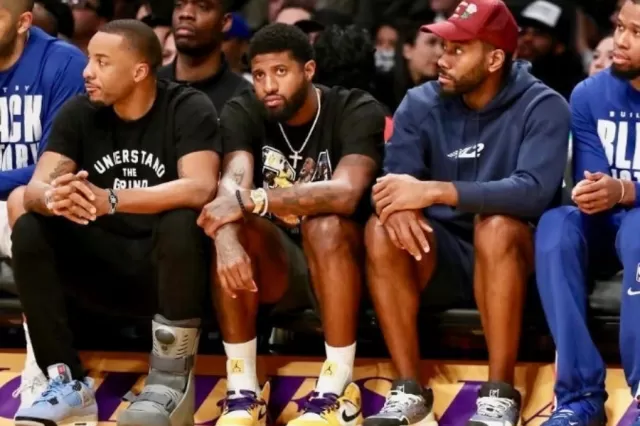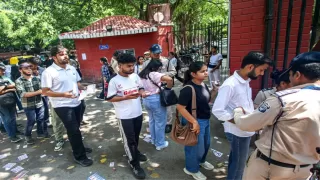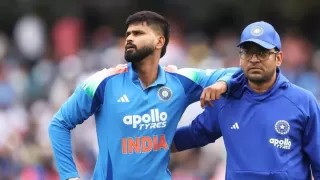The National Basketball Association (NBA) is in the midst of a growing storm, one that has less to do with buzzer-beaters and more with balance sheets and rest charts. The controversial practice of 'load management,' where players are rested during regular-season games to preserve their long-term health, has sparked fierce debate among analysts, former players, and, most crucially, fans. While franchises argue it helps prolong careers and optimise performance, the public sees it as a betrayal of loyalty and value. As this debate intensifies, one must ask: is the NBA jeopardizing fan connection for the sake of science and strategy?
Fans Pay, Stars Don’t Play
Imagine saving up to watch your favourite team, only to find the biggest stars sitting courtside in street clothes. That’s the harsh reality fans have faced in recent seasons. While some absences are injury-related, many are now strategic, part of the load management playbook. The frustration is real. Longtime fans and former greats like Robert Parish have expressed concern that this practice is alienating the NBA’s most loyal base. He called it 'insulting' for fans to buy tickets and not get what they came for: live, competitive basketball led by the league’s top talent.
This disconnect isn’t just emotional, it’s measurable. ESPN’s NBA viewership dropped by 28% at one point during the 2024–25 season, and other networks like TNT also reported declines. While some of this can be attributed to competing sports events and political distractions, many analysts believe the bigger issue is star players missing prime-time games without a clear injury reason. In short, the fans are watching less because the players they tune in for often aren’t playing.
Too Much Strategy, Not Enough Passion?
There was a time when every game mattered and every player showed up like it did. But modern basketball is evolving, or as critics argue, devolving, into a data-driven spectacle where the emotion and unpredictability are fading. Three-pointers dominate offensive strategy. Load management dominates scheduling. And to some, the game is beginning to feel automated less about hustle and more about risk minimization.
Former players and basketball purists, including BJ Armstrong, have voiced concerns over this shift. They argue that all 30 teams playing with the same analytical mindset drains the identity and spontaneity from the sport. The thrill of a hard-fought mid-season rivalry or a surprise comeback is being overshadowed by carefully orchestrated rest schedules and pre-determined game plans.
Why Teams Say Load Management Is Needed?
On the other side of the court, teams and medical staff argue that load management isn’t a luxury, it’s a necessity. The NBA season is a gruelling 82-game marathon, not including playoffs. The physical toll it takes on athletes is enormous, and advancements in sports science have made it clear: rest can reduce injury, prolong careers, and boost postseason performance.
From Kawhi Leonard to LeBron James, many of today’s superstars are not just players but massive investments. Teams are incentivised to protect their assets, even if it means sacrificing a few regular-season games. Studies support the idea that controlled rest helps prevent fatigue-related injuries and maintains peak condition during the most important parts of the season, the playoffs.

But while the benefits are well-documented in medical journals, the translation to fan satisfaction is much murkier. The gap between what’s scientifically beneficial and what’s emotionally acceptable continues to widen.
What the NBA Is Doing to Fix It?
The league isn’t ignoring the backlash. In recent years, the NBA has introduced several changes to address concerns surrounding load management and declining engagement:
- 65-game minimum for awards: To discourage unnecessary rest, players now must appear in at least 65 games to qualify for individual awards like MVP and All-NBA teams.
- Reduced back-to-backs: The NBA has altered its schedule to reduce consecutive game nights, hoping to minimise the need for load management.
- Midseason tournaments: Initiatives like the NBA Cup are designed to bring stakes to games beyond the playoffs, encouraging full participation.
- Media partnerships: New deals with Amazon, NBC, and others are part of a larger push to maintain exposure and keep stars visible on national platforms.
These measures signal an attempt to strike a balance, but whether they are enough remains a topic of debate.
Is the NBA Risking Fan Loyalty?

The tension at the core of this debate is loyalty, not just the fans’ loyalty to their teams, but the league’s loyalty to its audience. Some fans may accept the strategic rest if it leads to healthier, better-performing players during the playoffs. But others are growing disillusioned. The sense that games are becoming less meaningful and that tickets might not guarantee a full roster experience is eroding trust.
There’s also the competitive angle. The NFL and college football thrive on urgency, one game per week, every contest vital. If the NBA continues to treat regular-season games as optional exercises, it risks losing ground to sports that prioritise drama and consistency. Even legendary figures like Charles Barkley and Steve Kerr have warned the league: don’t let television ratings dictate priorities if it means alienating your base.
Can the NBA Keep Everyone Happy?
Load management isn't inherently bad. It's a sign of progress in understanding athletic performance and player welfare. But as the NBA embraces science, it must also preserve the soul of the sport, the emotional connection fans feel when they see their heroes giving their all, night after night.
Striking that balance won't be easy. But it’s necessary. Because when loyalty becomes a one-sided transaction, even the most die-hard fans start to walk away.
Also Read: 2025 NBA Draft: Mavericks Win No. 1 Pick Against Odds




























